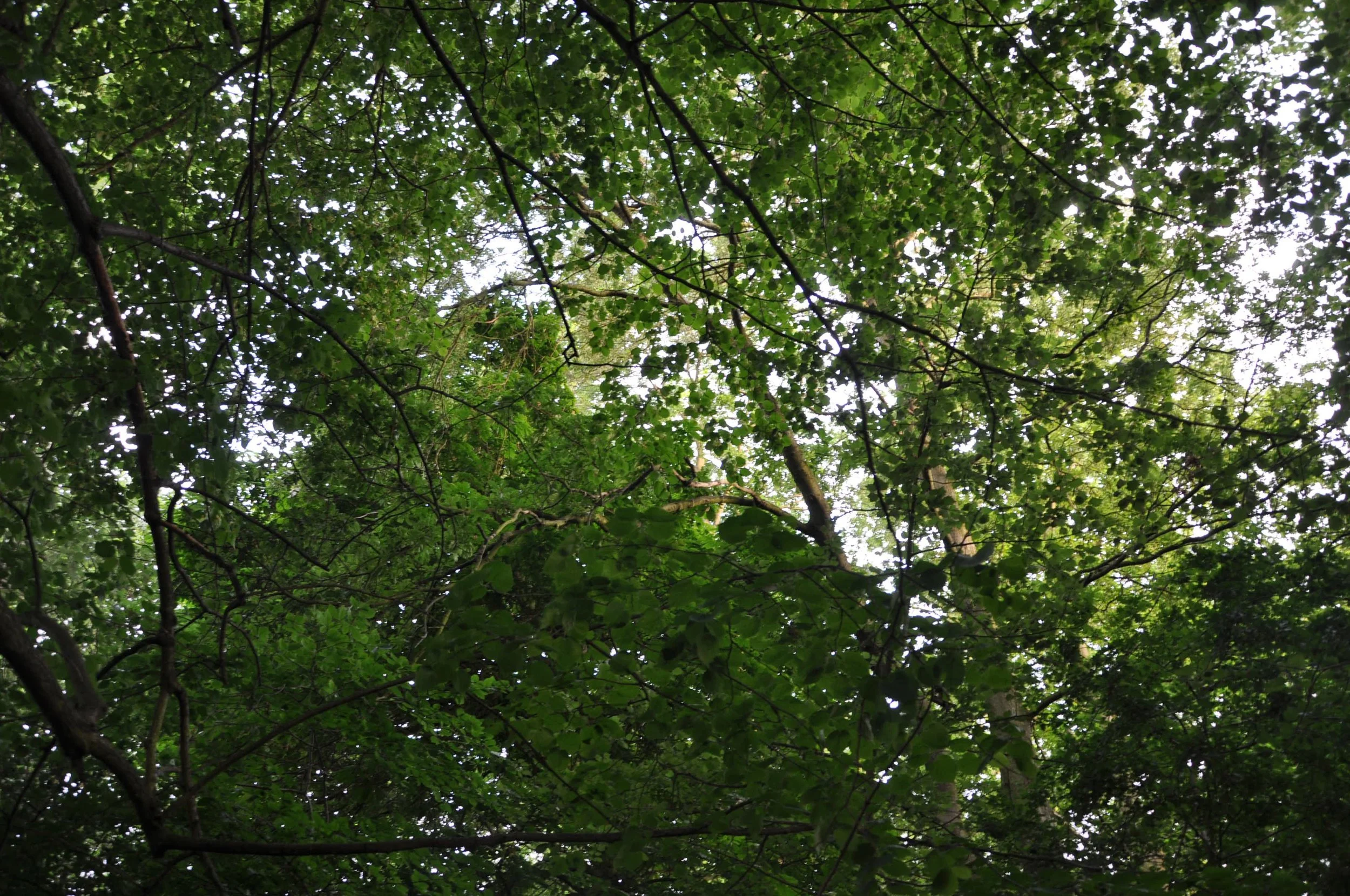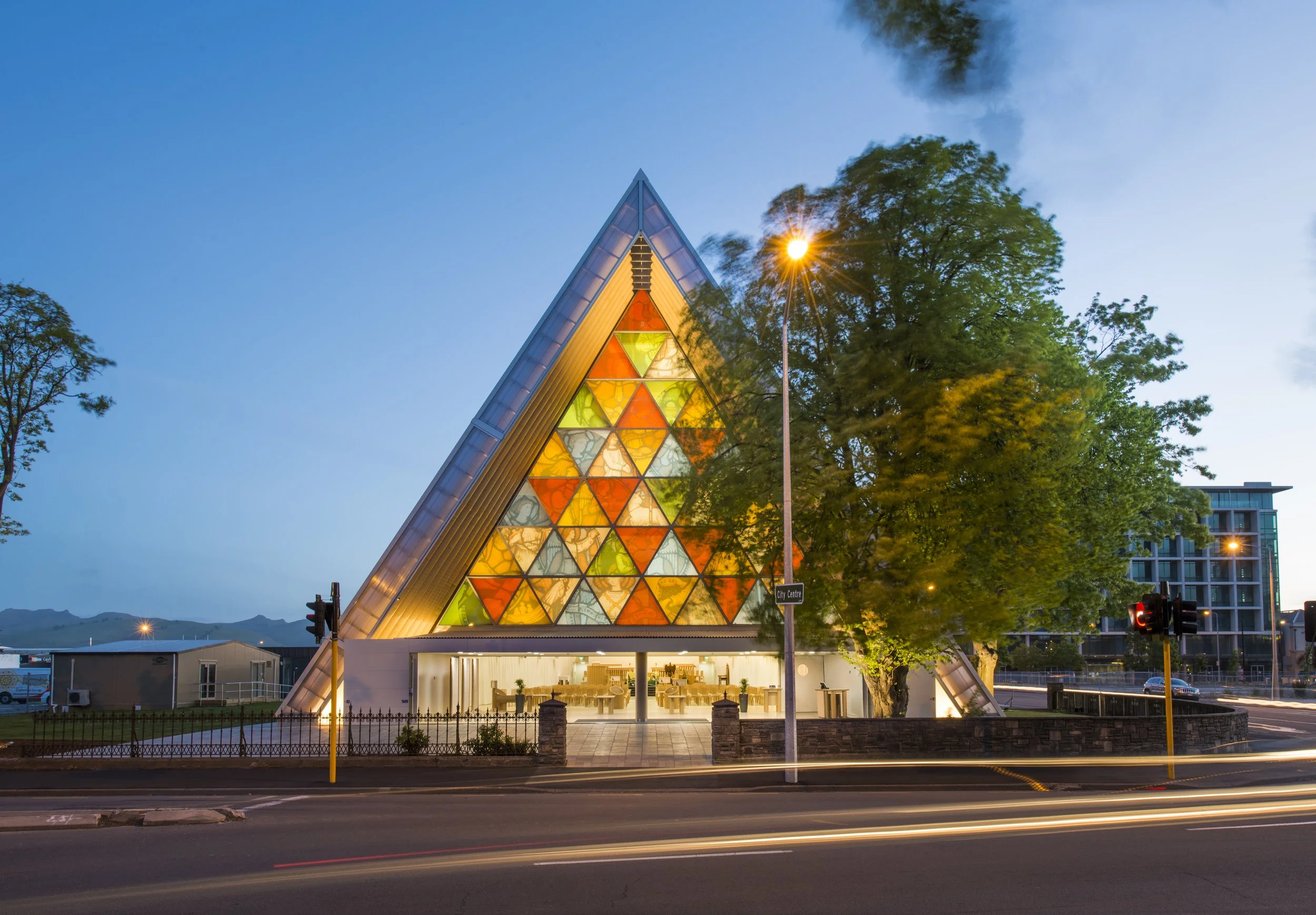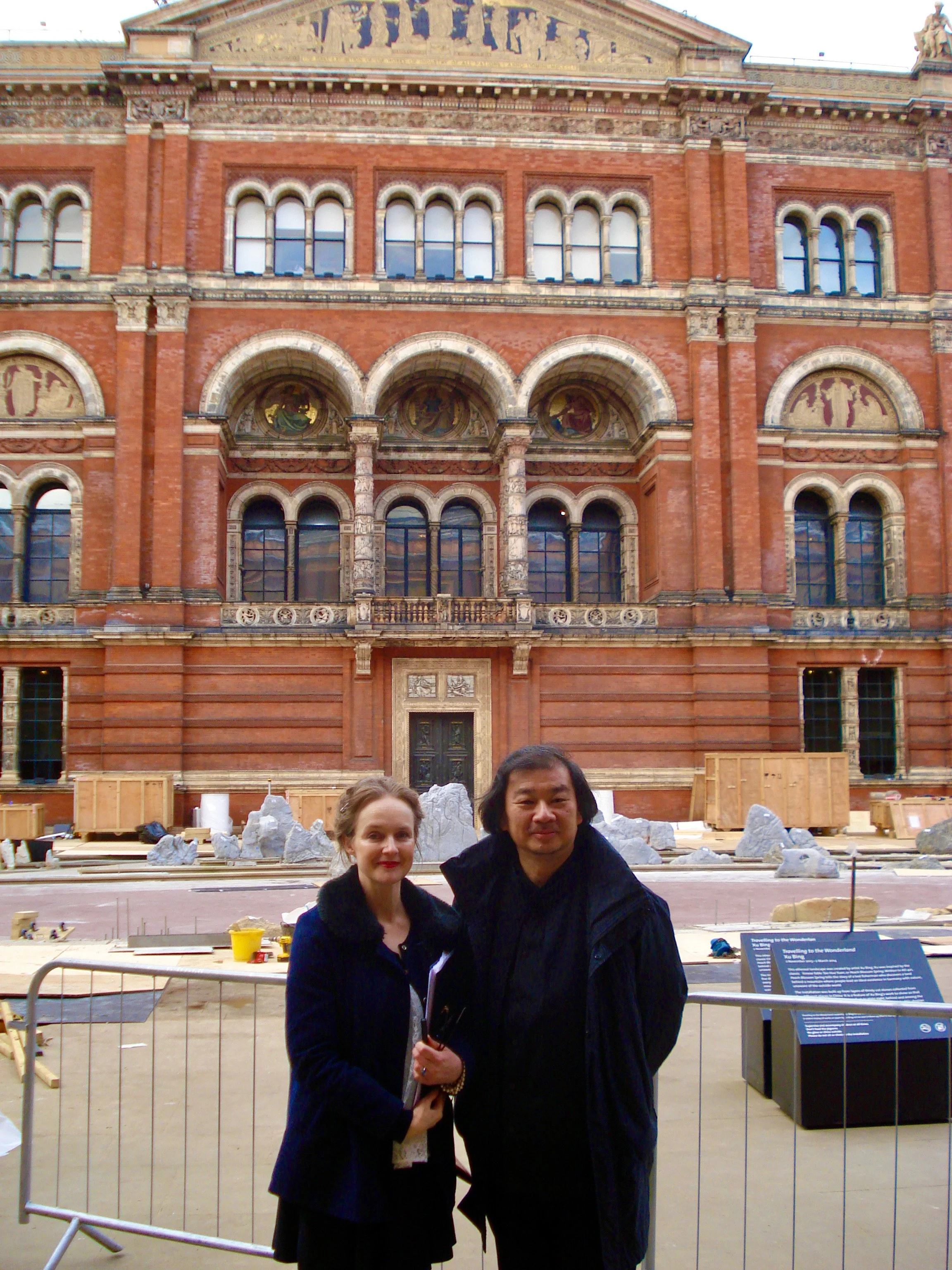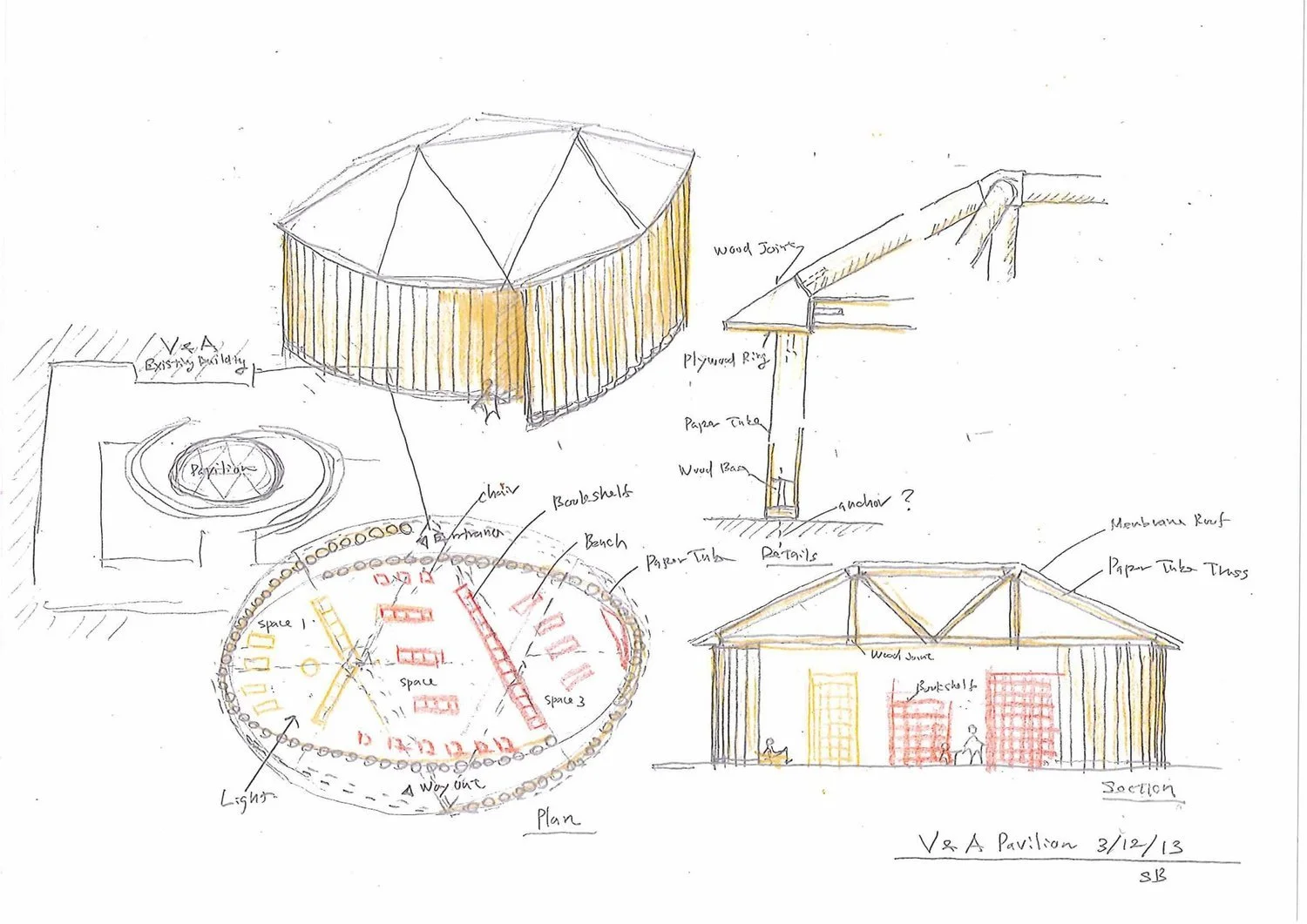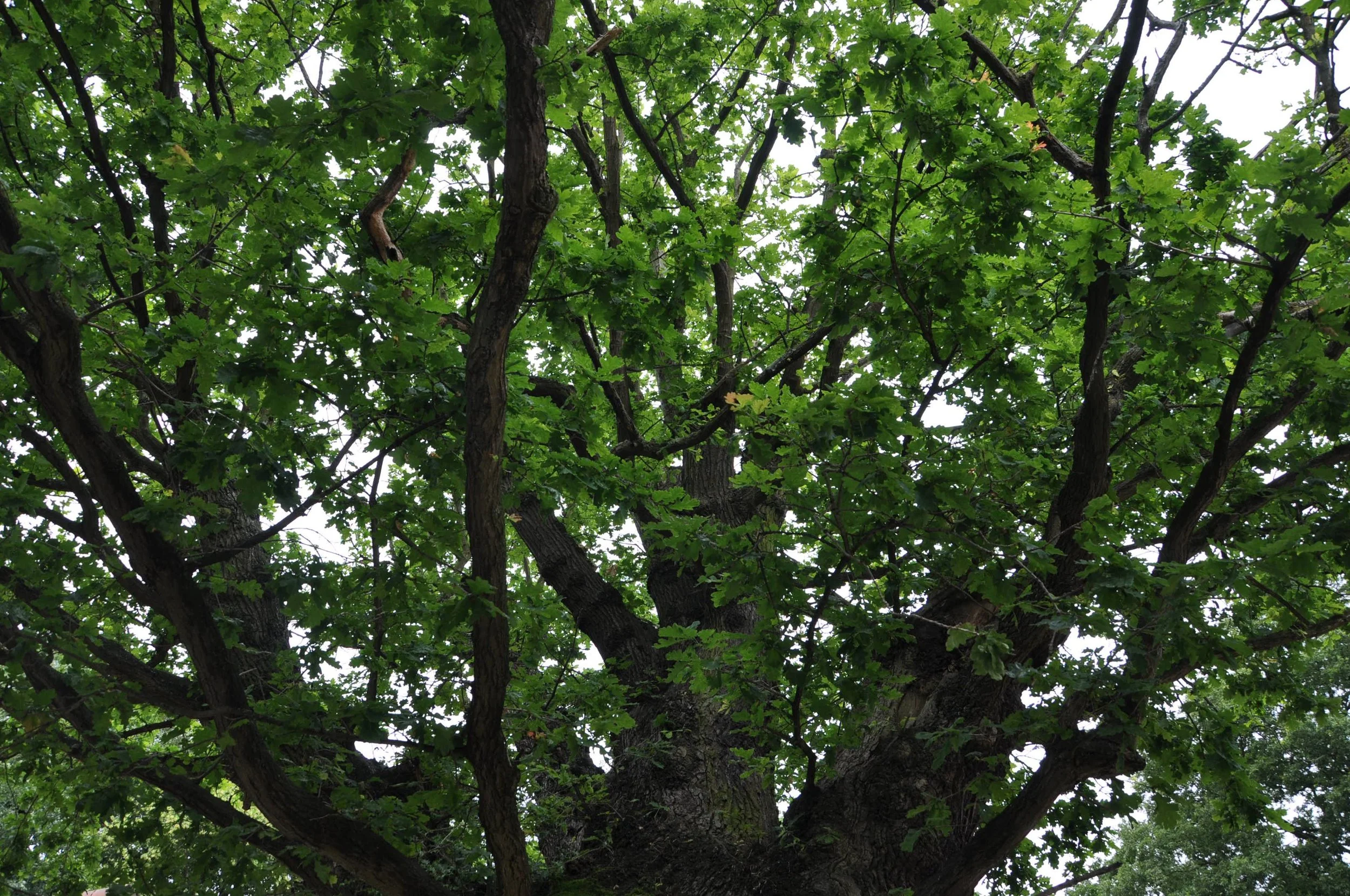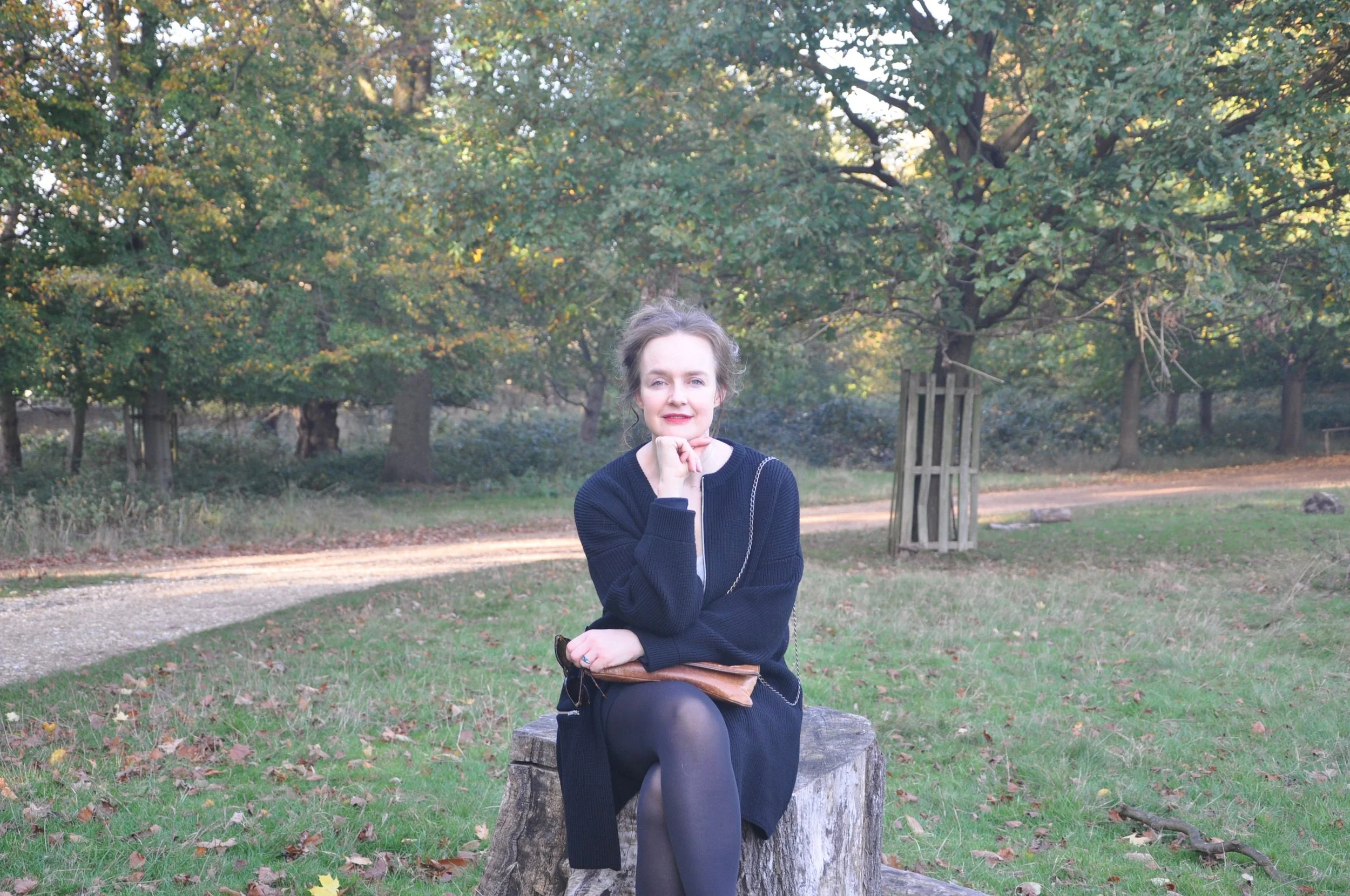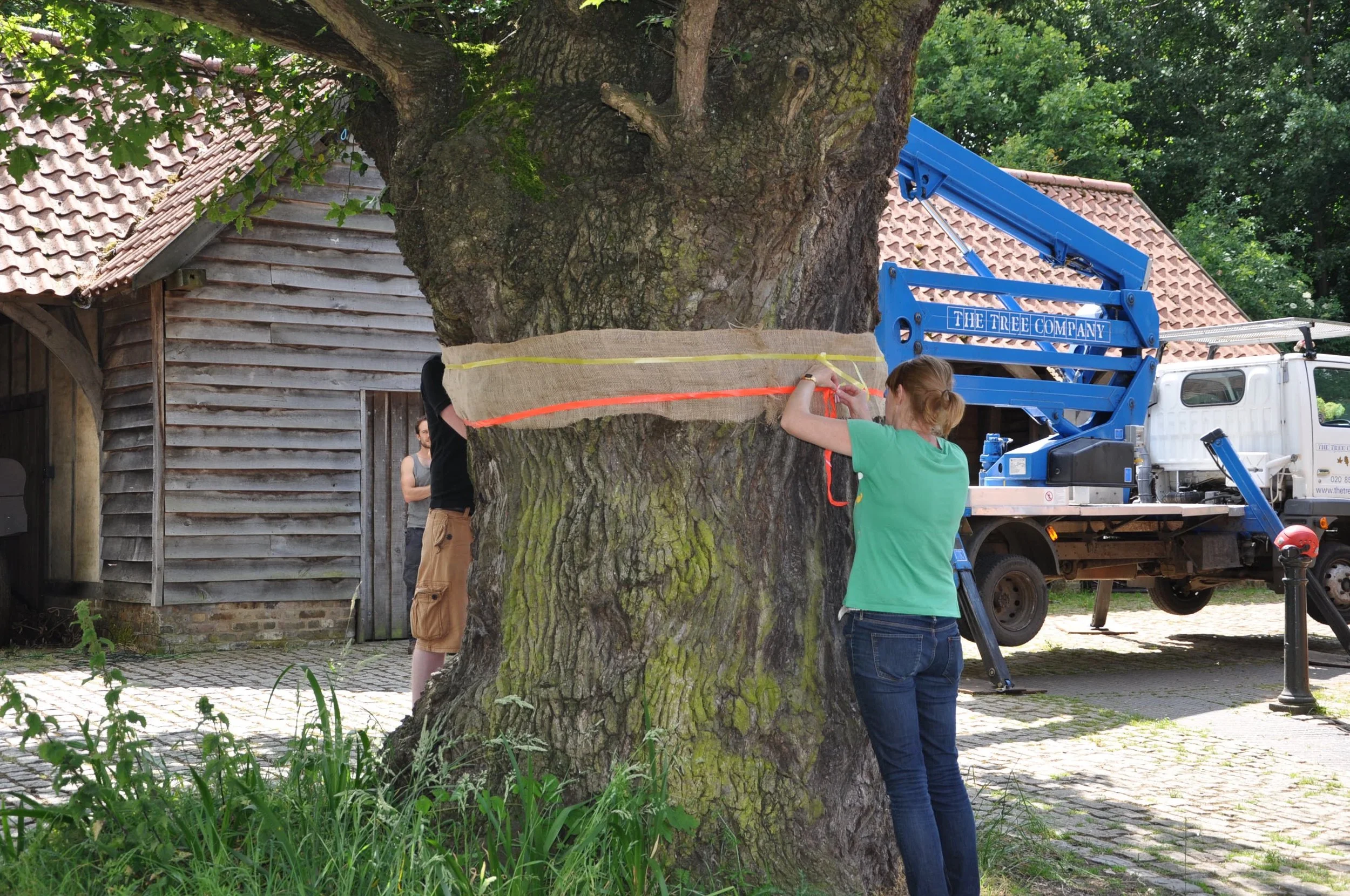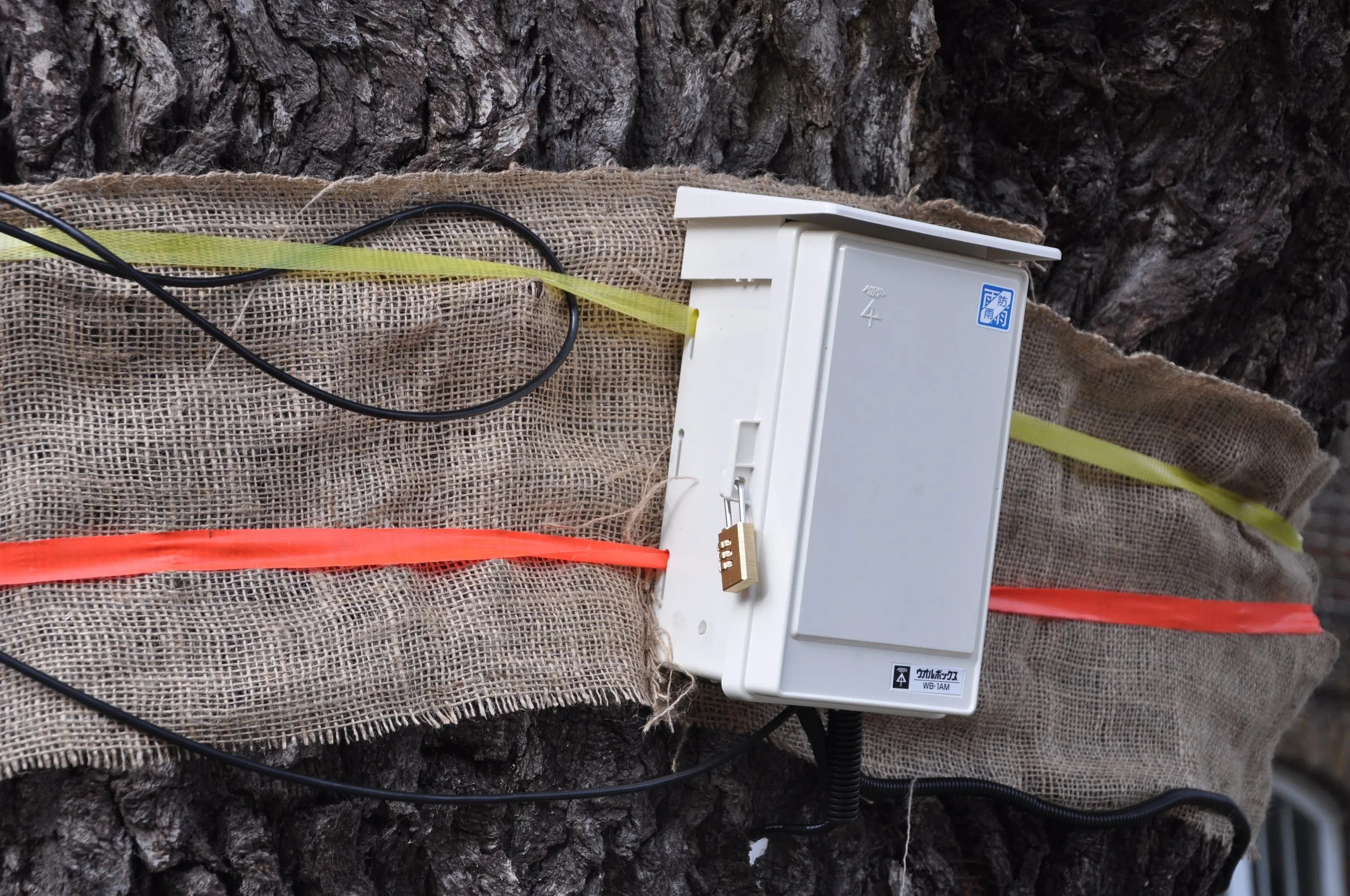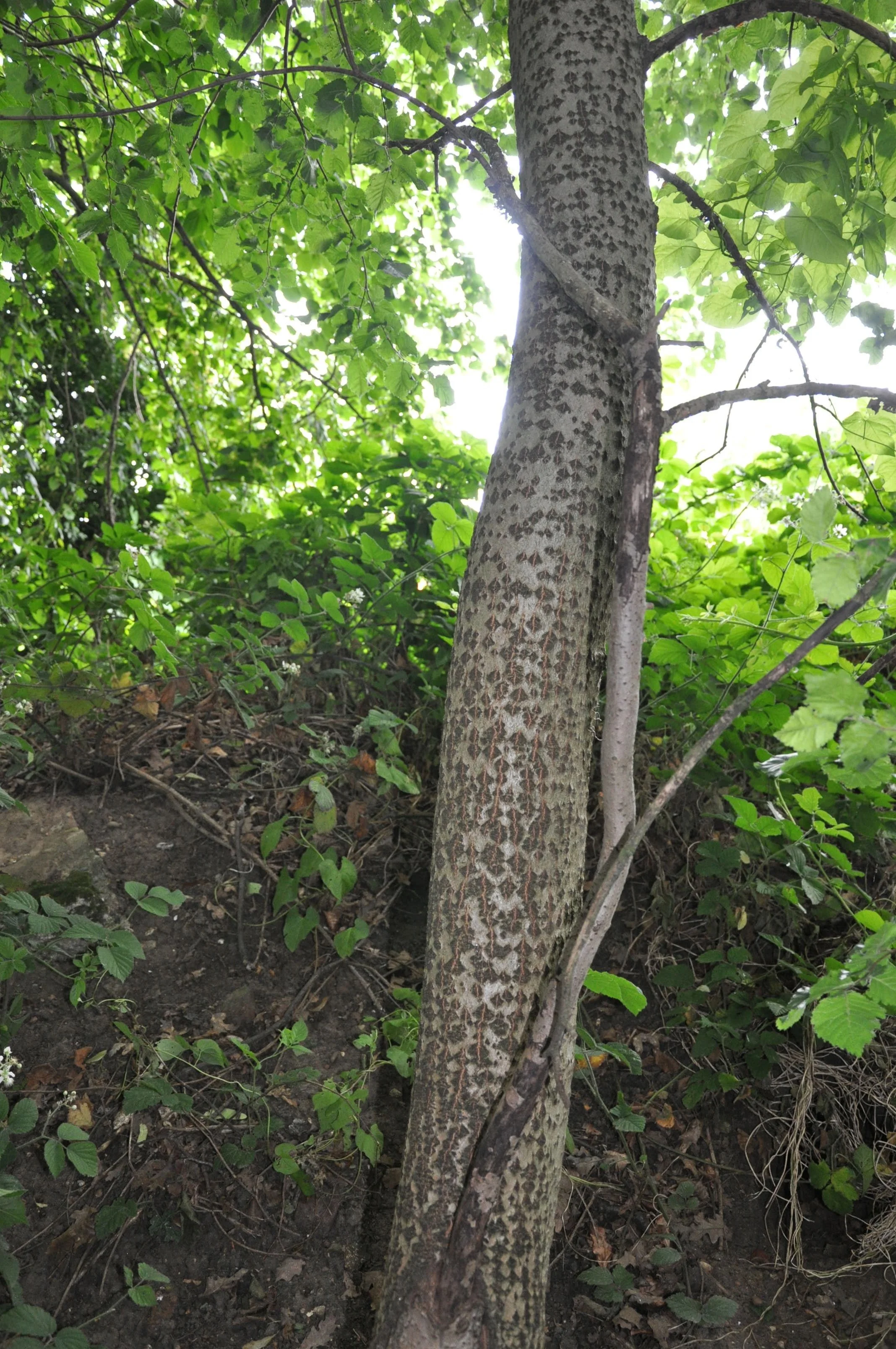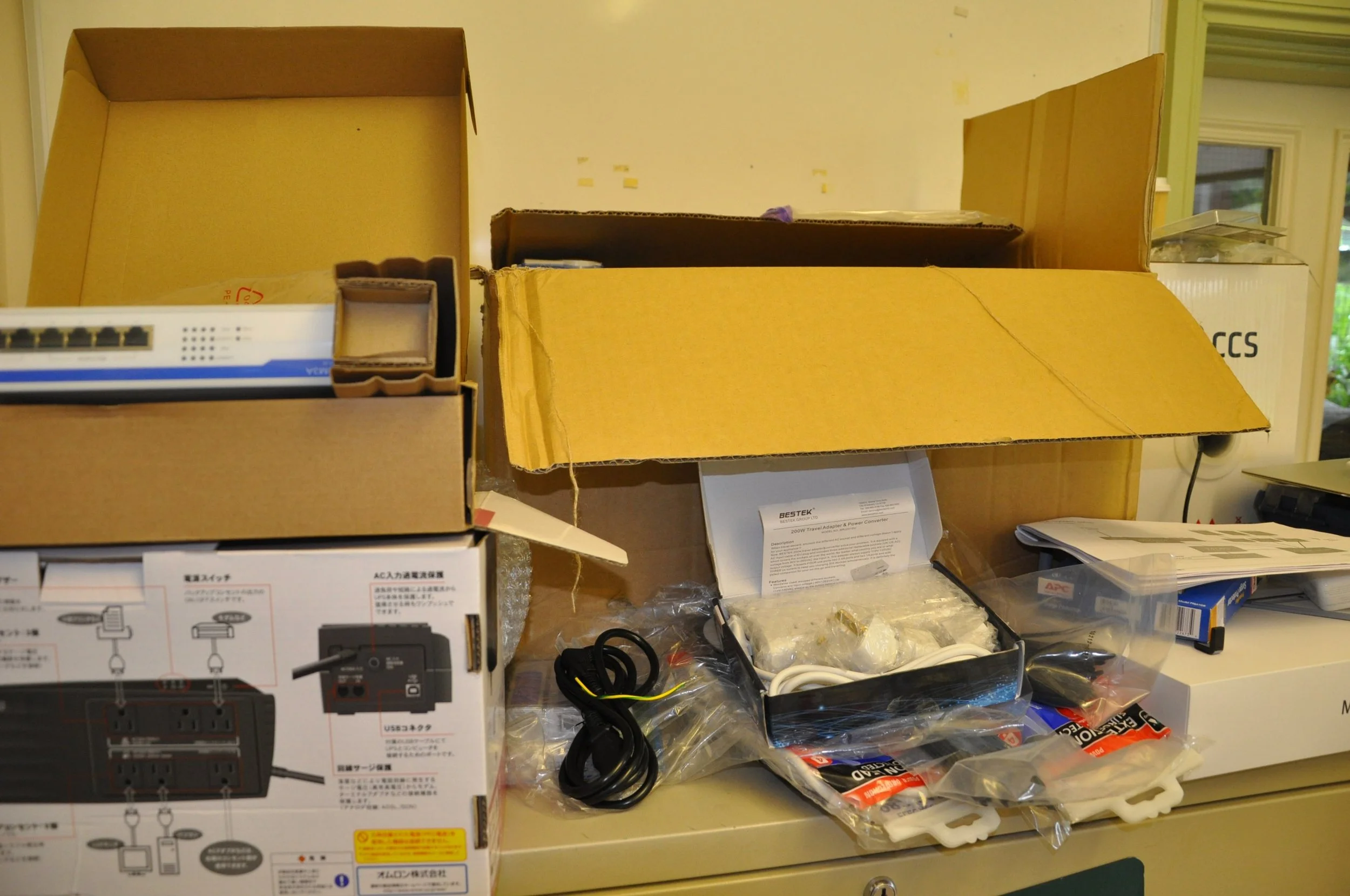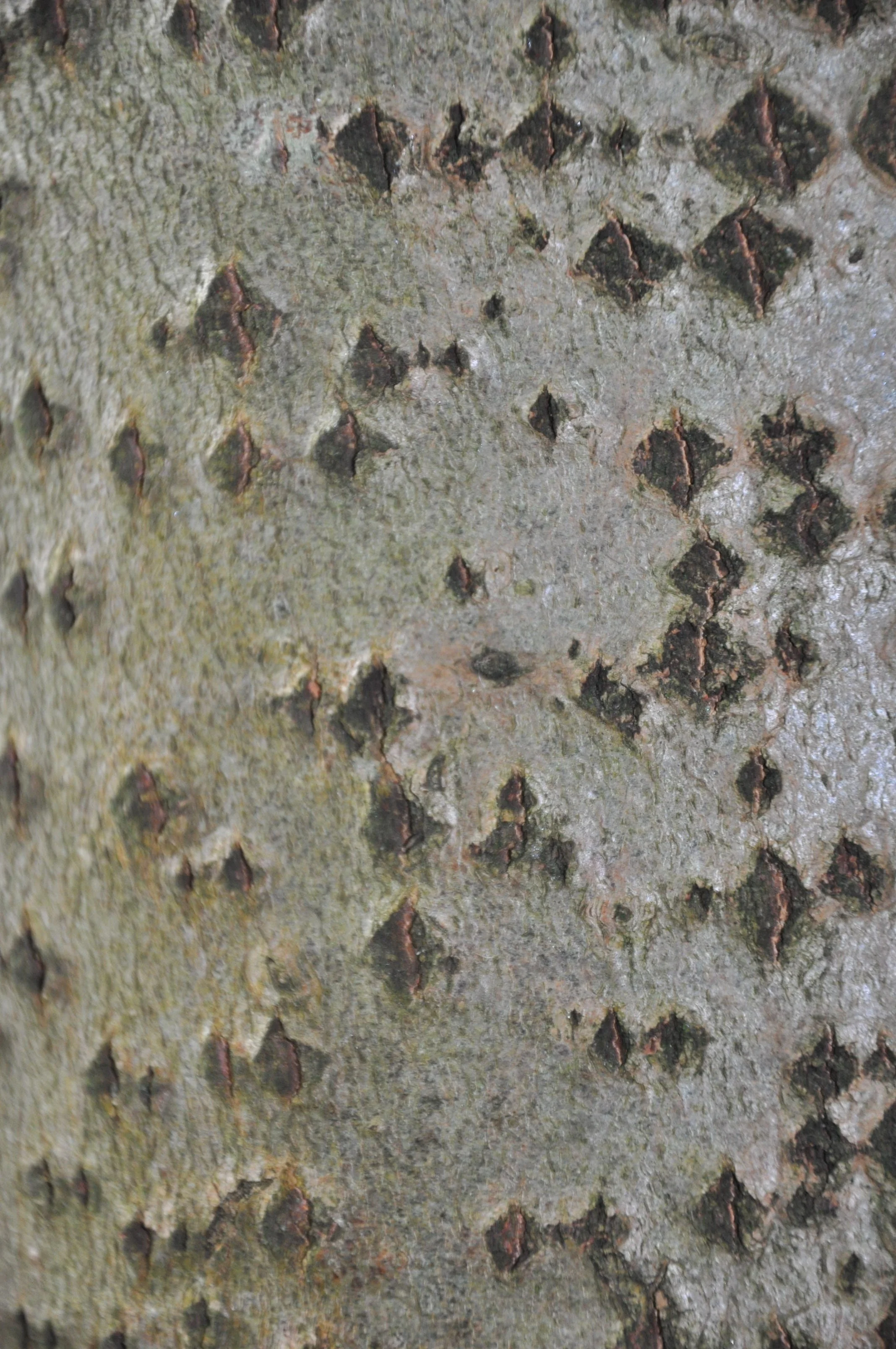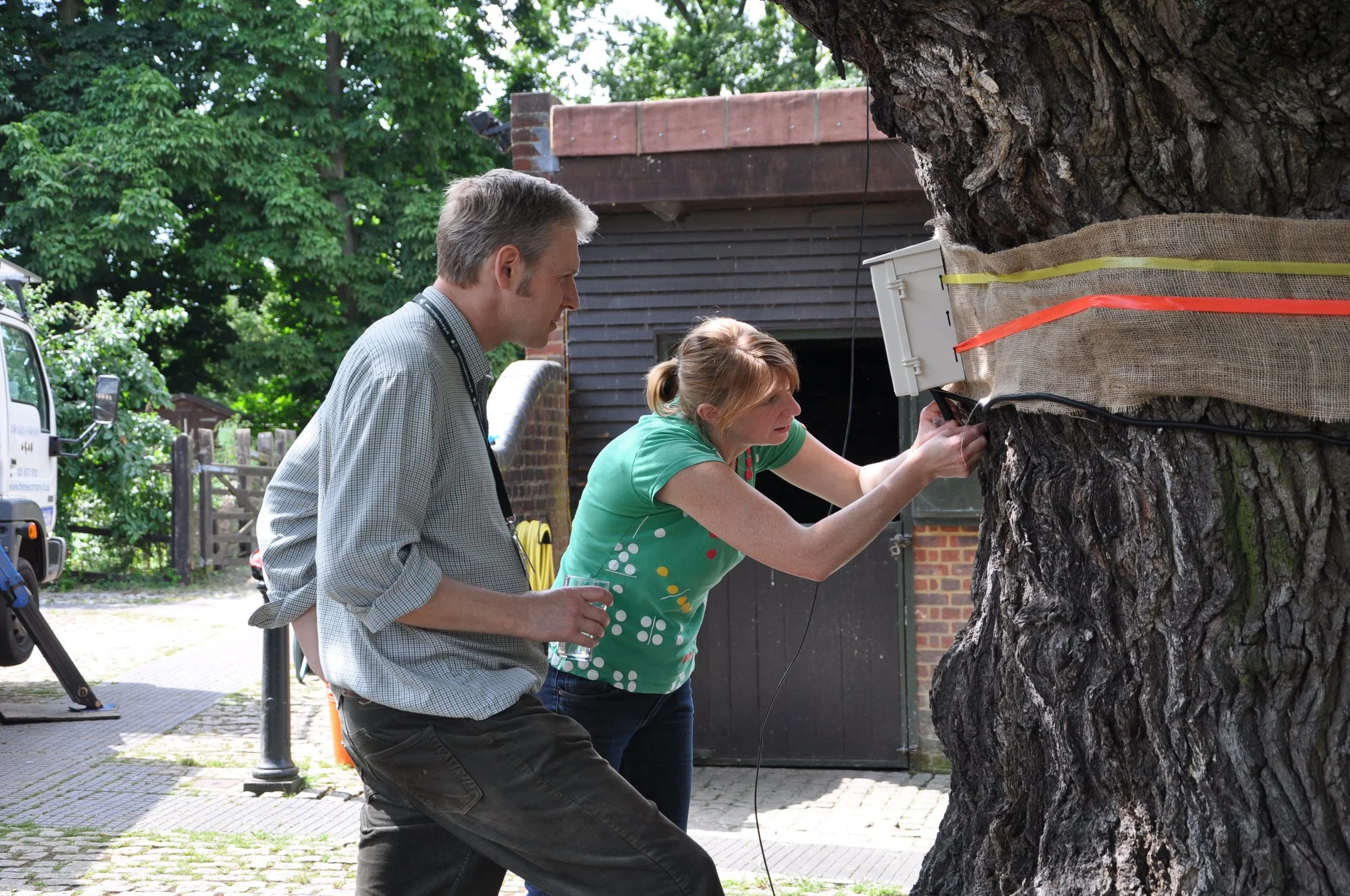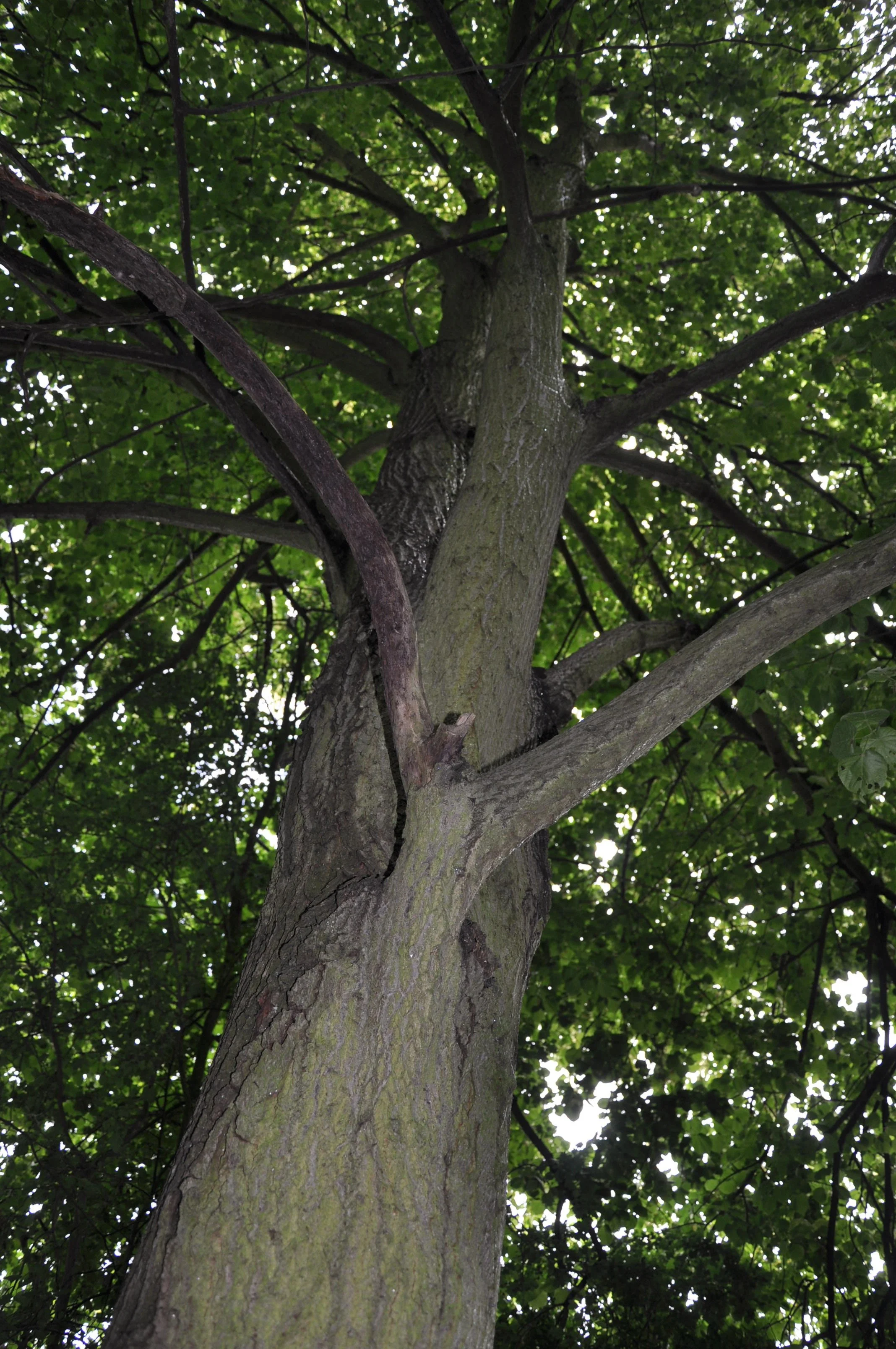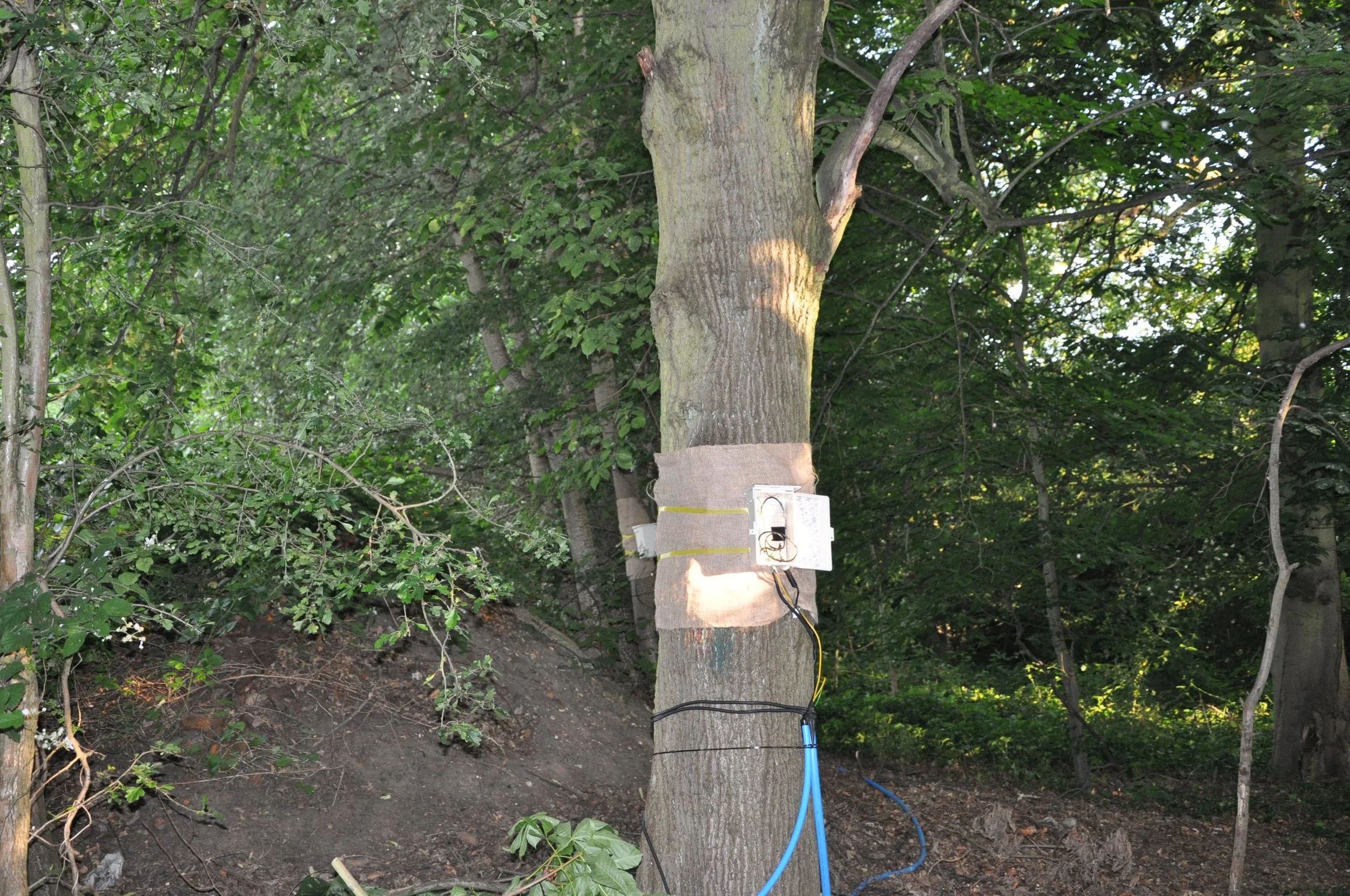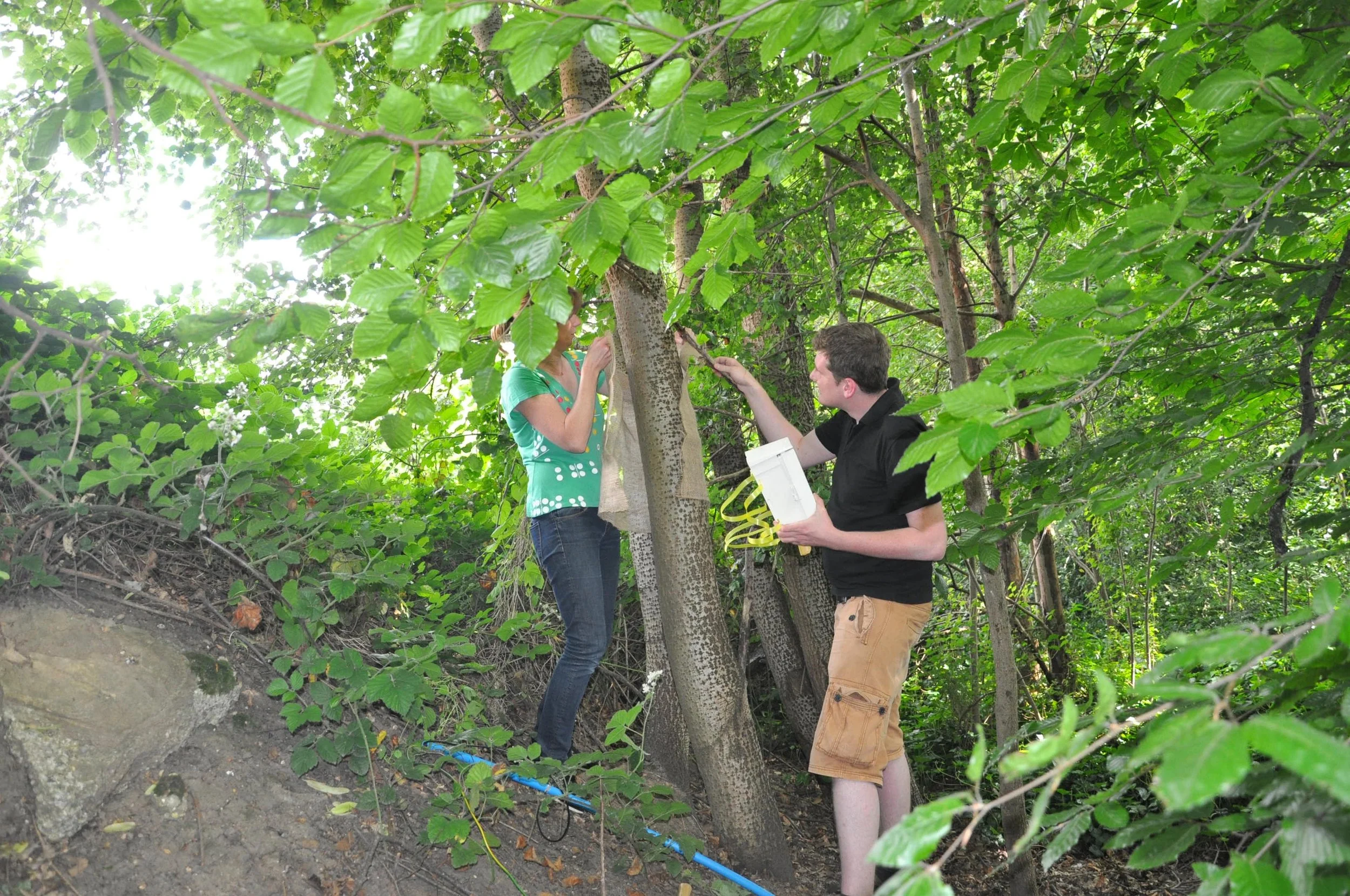Minutes from the First Meeting for “Container for Thought” in Tokyo, 11 March 2013. Attendees: Ryuichi Sakamoto, Shigeru Ban, Norika Sora, Kyoko Ueno (further extracts below), © Clare Farrow:
“Mr Sakamoto has been a long advocate for forest conservancy and forestation, including establishing an organisation called ‘moreTrees’ [https://www.more-trees.org/en/] in 2007. Mr Ban proposed to Mr Sakamoto the idea of creating a meditative space that promotes contemplation, on the theme of Trees.”
“Mr Sakamoto has always wondered why there isn’t furniture or an art object which generates music for joy or pleasure? Why isn’t there music as a beautiful object? He has a strong vision of being in a purposeless space, appreciating music that floats in the air like an aroma, using all the senses. … Mr Sakamoto thinks there should be architecture like music, and music like architecture.”
Container for Thought by Shigeru Ban & Ryuichi Sakamoto
An experimental meeting of architecture, music and furniture design by Japanese musician, composer and environmentalist Ryuichi Sakamoto, and architect, humanitarian and Pritzker Prize-winner Shigeru Ban. Initiated by Clare Farrow in Dec. 2013, it is a response to the climate crisis and the need for nature, humanity and technology to co-exist in harmony; though now the world is hurtling in another, very different direction. This paper-tube reading room, containing books and music, is unrealised.
First designed for the V&A Garden, and then for the Royal Academy courtyard in London, the project was interrupted by funding issues and very sadly, by Sakamoto’s illness. Nevertheless, the first part of the project - the tree recording which was funded by Shiseido Japan and supported by The Royal Parks - did take place; and Clare Farrow and Shigeru Ban are determined, one day, to make the entire project happen, in honour of Ryuichi Sakamoto (1952-2023). In Clare’s words:
“‘Container for Thought’ is very close to my heart, as it was my first curatorial concept. It arose out of my respect for two great Japanese artists who had never met, the architect and humanitarian Shigeru Ban, and the composer, musician and environmentalist, Ryuichi Sakamoto. It also arose out of my love for a piece of music, “Merry Christmas Mr. Lawrence”, which has a simplicity and spirit that is so acute in its humanity that it pierces the soul.
I first interviewed Shigeru Ban in 2011 for the RIBA Sustainability Hub, an online platform for research and writing on sustainability in architecture. But my phone interview did not start well. What did Mr Ban feel was most important about the issue of Sustainability, I asked. “Nothing”, he replied bluntly. “Sustainability is just a fashionable word.” There was a silence. However, I persevered, and soon discovered that, while impatient and not always a fan of journalists, Ban is direct and passionate in talking about his work, about the “weak” materials he uses (paper/cardboard tubes and wood) in opposition to concrete and steel; the innovative structures he has built with intricate joinery, light and air; and most of all, his disaster-relief architecture, which allows him to leap over red tape to provide almost instant, dignified shelter for people who have lost their homes and belongings in natural and man-made disasters.
‘The Japanese earthquake and tsunami had recently happened when we first spoke. Also, the earthquake in Christchurch, New Zealand, which had felled the city’s cathedral. Ban was just beginning to design his extraordinary ‘Cardboard Cathedral’ there. For the Japanese victims, he had decided on modular wood furniture for their temporary shelters, so that they could assemble the modules in different ways, finding a means of individual expression in the midst of so much loss. To source the material, he had contacted the MoreTrees Foundation in Japan, founded by Ryuichi Sakamoto. Had they met, I asked. “No”, he replied. But he admired his work, and in fact had always “envied musicians”, having played the violin as a child.
Images below: Shigeru Ban and his Cardboard Cathedral, photos courtesy Shigeru Ban Architects, Blueprint feature “A House of Card” written by Clare Farrow
‘This was the trigger for my idea, to invite them both to collaborate, to form a meeting of architecture and music, an immersive structure called “Container for Thought'“ that would hold the music of Sakamoto; and with the help of Blueprint’s editor Johnny Tucker, I was introduced to Ben Evans, director of London Design Festival. We would plan it for the V&A, he said, the hub of LDF. And that is how the project began.
Amazingly, both artists said yes, and many meetings and conversations then followed between them, in Tokyo, New York, and London. The first was in Tokyo on 11 March 2013. Two very different personalities, but both equally passionate about the environment and humanity. Gradually, a project developed into a first sketch and written description: a paper-tube oval structure that would sit in the V&A’s John Madejski Garden, containing furniture designs and music, which Sakamoto said would float, “like perfume in the air”.
‘I had imagined this music would be melodic, like ‘Merry Christmas Mr Lawrence’, but my first (starstruck) meeting with Sakamoto in the V&A garden, quickly removed this idea. As his partner and manager Norika Sora explained, as we had tea in the old ‘Gamble Room’ V&A café (while Sakamoto took many photos of the Victorian glass and tiles), he was no longer writing melodies but instead believed that the composer should be nothing but a mediator between people and nature.
To create the music for ‘Container for Thought’, he said, I would need to record the life data from trees (the movement of water and sugars, the process of photosynthesis), and then he would convert this data into sounds according to a system he had devised, using sensors invented by the YCAM Lab in Japan - and this would be part of his ongoing project “Forest Symphony”. He also handed me a book, called ‘Art & Music’, from an exhibition he had curated in Tokyo, in which he had explained this thinking, and a collection of his CDs, and then he kissed my hand goodbye.
I would meet him two more times, both in London, and with the curator Noemí Blager who also came on board with the project. They are memories I treasure. I also treasure the notes that were made by Ban’s assistant Kyoko Ueno, recording the architect’s conversations with Sakamoto as they developed into a definite plan, concept, and first sketch.
‘Working with artist Julie Freeman and sound engineer Matt Jarvis, and supported by Shiseido Japan and The Royal Parks, I recorded 3 trees in Richmond Park, London, throughout the summer of 2014. The resulting data was converted into sound and this was included in Sakamoto’s ‘Forest Symphony’ exhibition at SIAF (Sapporo International Arts Festival) in 2014.”
Below: Images of the tree recording in Richmond Park, London, © Clare Farrow Studio 2014. Technology by YCAM Lab. Creative sound artists Julie Freeman and Matt Jarvis. The recording was by kind permission and involvement of Adam Curtis, Assistant Park Manager, Richmond Park. Three trees - a 500-year-old Oak tree, a Linden tree and an Aspen tree were recorded.
Further Minutes from the Tokyo meeting, 11 March 2013:
“Mr Sakamoto: ‘How do you think about Antoní Gaudí?’ Mr Ban: ‘His works look chaotic in appearance, but it has excellent structure.’ Mr Sakamoto: ‘That is suggestive to my experiment.’”
“Mr Sakamoto referred to La Monte Young, who influenced artists such as Fluxux (Nam June Paik, etc. …). La Monte Young composed a song called ‘Compositions 1960 #5’ which was expressed in text form. The music starts when the butterflies are released in the room, and it ends when all the butterflies are out. The idea is free from preconception, and it is also very visual. Mr Sakamoto thinks it can be suggestive of ‘The Container for Thought’ project.”
All text from this meeting is copyright Clare Farrow Studio.



